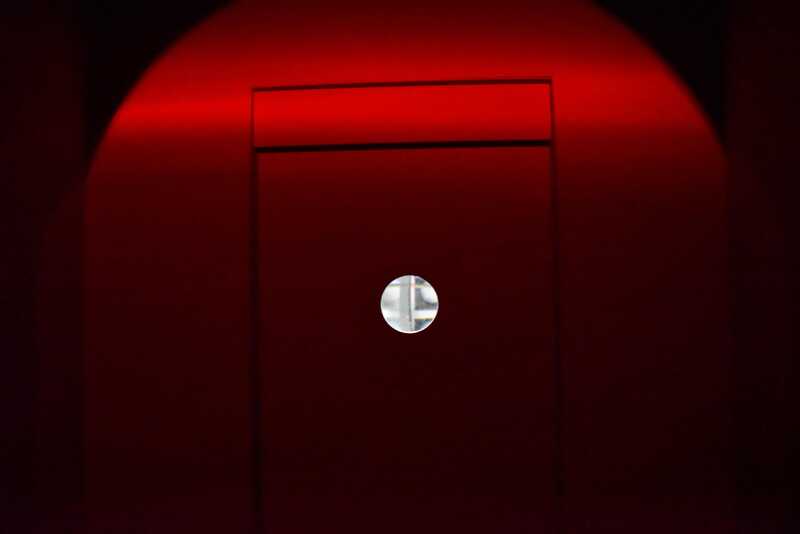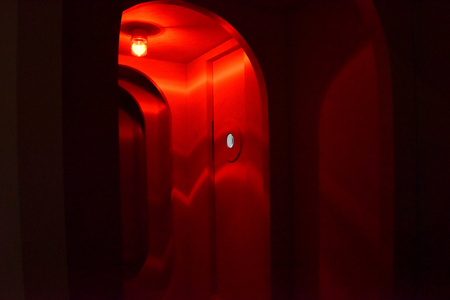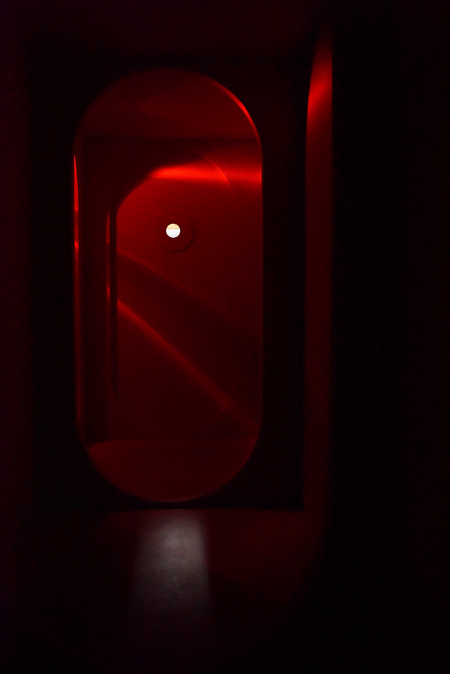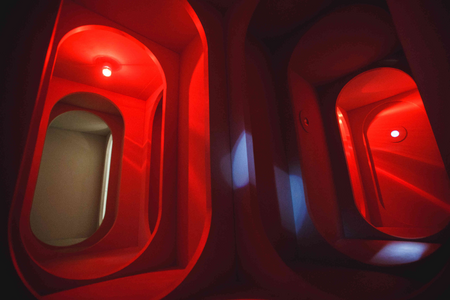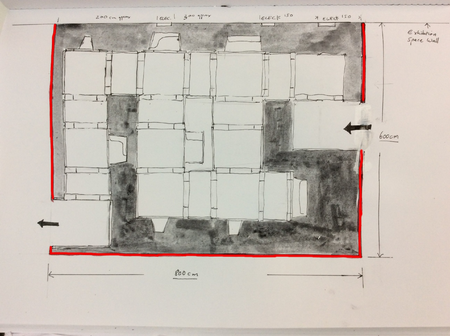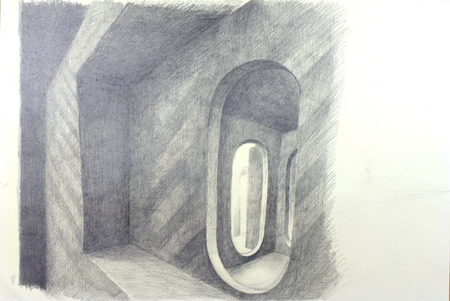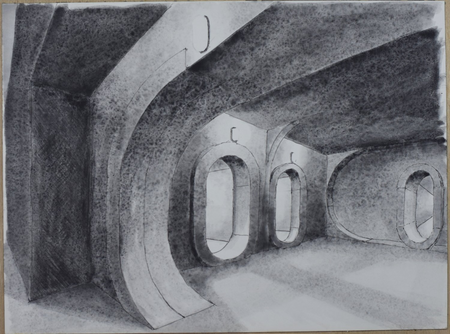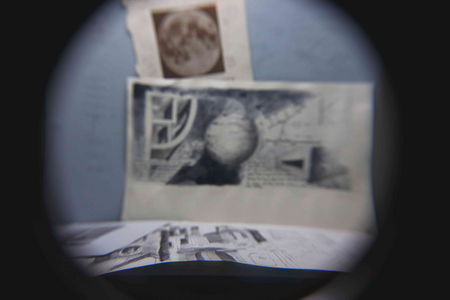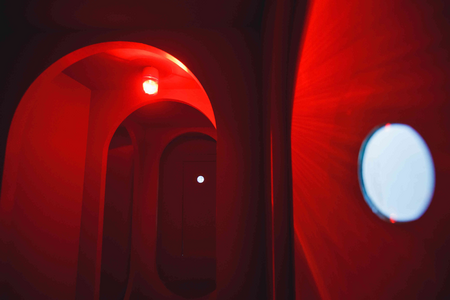An installation of corridors, doorways, flashing lights and sound - a low rumble and a voice intoning a series of numbers.
There are numerous ideas, both visual and conceptual, that form the basis for this particular work, with the dialogue between the initial ideas and the changing construction of the work producing further elements within the overall structure, and initiating further ideas to follow. The work can be seen to mirror its own creation, taking on a life of its own. As if it was not an act of construction, but the result of the uncovering of a pre-existing site.
The starting point was science-fiction, not the bright shiny science fiction of the contemporary media, but the science-fiction of television programmes of 1960’s UK, where the black and white images allowed room for imagination. As a child the imagery of these programmes affected my view of the city of my birth, where all strange corridors and abandoned buildings became infused with the possibilities of something unexpected, and a small room could be the entrance to another world. My love of science-fiction writing was engendered at this time, especially of those works that take as their subject the psychological effects of the Anthropocene.
A further idea referenced in the installation is the idea (rather than the actuality) of the space-station, and speculation on how anyone could cope with an existence forever contained within an endless interior. Maybe memory would begin to take over, and the ghosts of the past would materialise in the corridors. Such contained interiors are spaces that become divorced from connection to anything except what is within, and there is here a connection to Earth bound contained interiors. A specific film is referenced here, but I will leave you to guess which one…
The installation, by the fact that it is a space of corridors, proposes an unstated series of narratives. Installations are in this way akin to theatrical events. However, in the case of the installation, the audience become the actors in narratives of their own imagining.
The installation was first exhibited at SeeArt Taipei, and then extended for the Formosa Sculpture Biennial in Kaohsiung Taiwan.
Space Station (Station 3)
Datenblatt
- Abmessungen
- 250cm, 600cm, 800cm (Höhe, Breite, Tiefe)
- Jahr
- 2017
- Material
- Glas, Sound, Licht, Mixed Media, Holz
- Stil
- Installation
- Thema
- Wissenschaft, Gesellschaft
